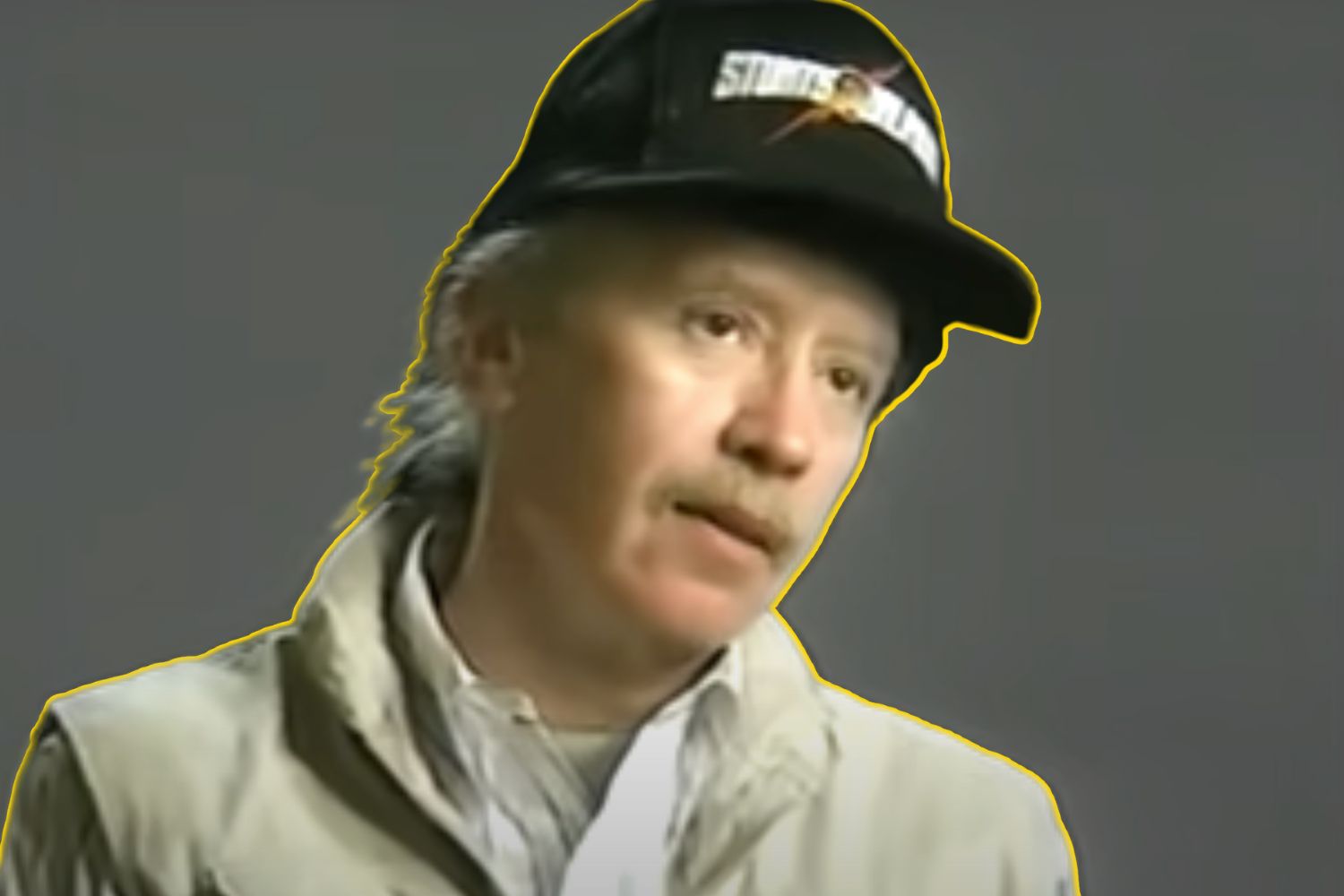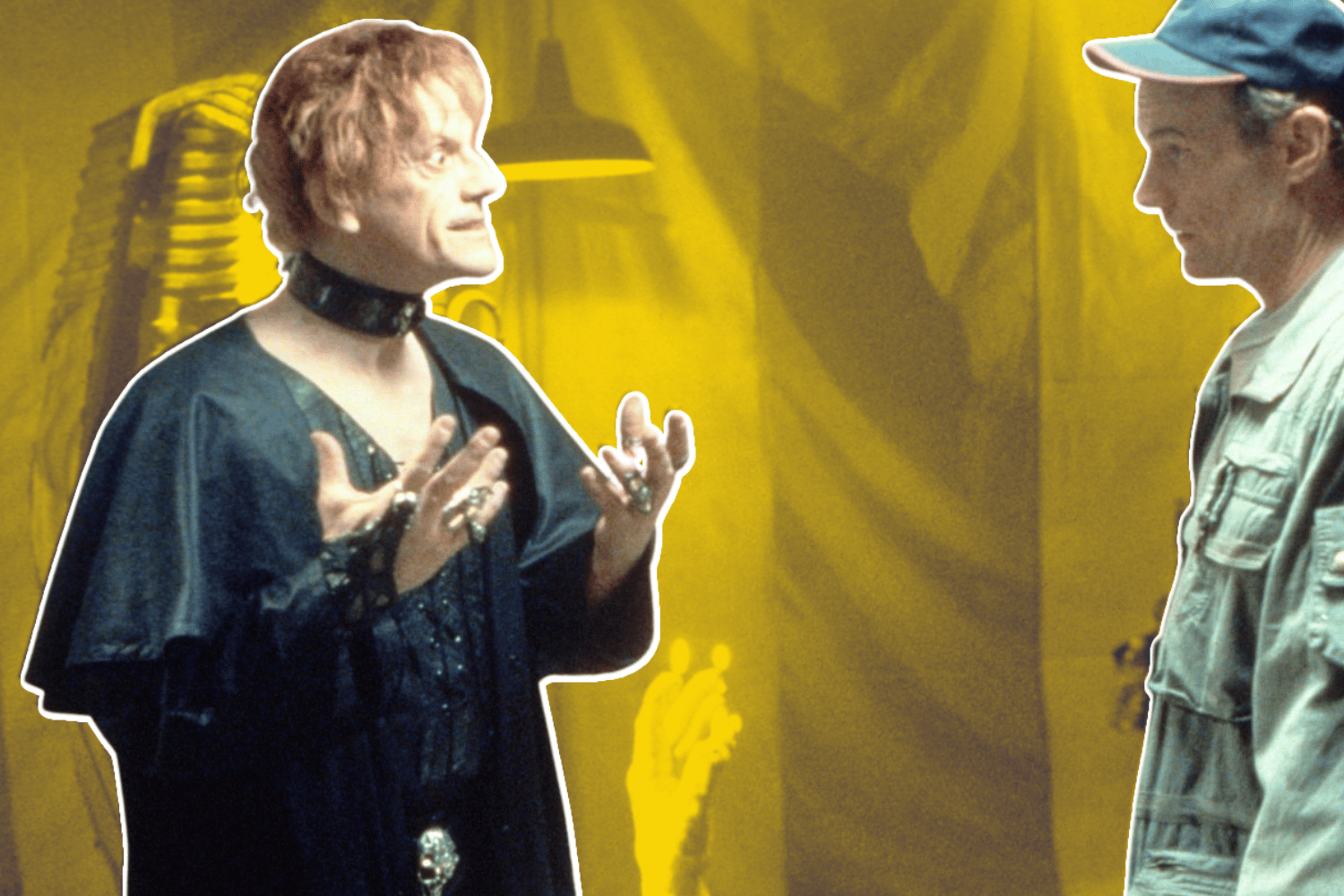Editorials
‘Fear In The Dark’: Horror’s Impact From Those Who Know Best
April 25th, 2023 | By Samantha Jacobs

The horror genre doesn’t often get the praise it deserves. It’s rare to see a horror film in the running for an Oscar, and those that make the cut win even less often. The source of this underestimation is that horror can be both controversial and undeniably polarizing. Diehard fans swear by their genre of choice and enthusiastically look forward to new releases. Meanwhile, those who don’t understand the appeal of horror movies believe the genre has nothing to offer audiences. However, the 1991 TV documentary Fear In The Dark might make some naysayers into horror believers.
This unassuming film sparks a meaningful conversation about the history of horror, starting with how literary figures like Edgar Allen Poe still influence films today. It treats viewers to a surprisingly thorough genre history without losing momentum or drowning in small details. Despite its brevity, the film covers many iconic characters throughout the last few centuries, from Bram Stoker’s Dracula to the villains of modern-day slasher films. Along the way, audiences learn small tidbits about the science and emotion behind some of the genre’s most successful films.
Although beloved The Lord Of The Rings alum Christopher Lee provides excellent narration, the real draw of this film is the string of scary movie powerhouses that weigh in on the genre. Multiple directors—including Dario Argento, John Carpenter, and William Friedkin—present their theories about why horror films are so powerful and memorable. They discuss their own work, of course, but also provide commentary on the horror movie world as a whole.
However, Fear In The Dark isn’t just a discourse between directors. The film also features Psycho author Robert Bloch and psychologist Dr. Glenn Wilson, who contribute unique perspectives outside the directorial sphere. Even a handful of self-proclaimed horror movie fans appear in short interviews, sharing their thoughts on the viewer experience for several iconic movies. Unfortunately, these fan testimonials don’t receive as much screen time as they deserve, but they still create an easy path for audiences to see themselves represented in the conversation. Many featured fans are in their teens or early twenties, but their feelings about scary movies will be universal for most viewers.
The relatively loose format of this film gives it an intimate feel that will appeal to true horror lovers. Rather than watching each expert speak separately, the film jumps back and forth between different clips with shared topics. Spliced-together interviews feel like cohesive conversations in several parts. Overall, the format provides viewers with a rare way to compare the opinions of some of the most influential voices in horror. In addition, the documentary covers multiple social and psychological topics that invite viewers to take this often-overlooked genre more seriously.
One of the documentary’s most intriguing points is that watching horror films is about control. Wes Craven theorizes that horror films don’t captivate us because they make us afraid but because they allow us to vent our daily fears. In his reckoning, the world is a scary place, but horror movies are a vehicle through which we can release our pent-up anxieties in the manner we choose. John Carpenter seconds that assertion, noting that the genre especially appeals to younger audiences facing the daunting task of stepping foot into adulthood for the first time.
Later in the documentary, the question of how horror movies do (and don’t) influence real life spills over into issues of morality and crime. Multiple directors discuss the so-called “psychopath movies” of the 1970s and the notorious serial killers such as Jack the Ripper and Ed Gein’s influence on the genre. For example, the depth of Hannibal Lecter’s personality in The Silence of the Lambs echoes traits common in some real-life criminals. This proximity to reality is part of Lecter’s undeniable staying power and occurs with many horror film villains, even some that audiences might not expect. John Carpenter describes a phone call he received from a fan who wanted to meet “The Shape” from Halloween and firmly believed that this killer was a real person.
In discussing the rise of psychopath-centered horror films, the documentary also focuses on the recurring theme of killers claiming the lives of adolescent girls. Although they don’t mention the “final girl” trope by name, a few subjects touch on the idea that only morally righteous characters survive in certain films. For example, Wes Craven frames the somewhat puritanical leans of some horror films as one of the genre’s shortcomings, and The Rats author James Herbert cites the Halloween franchise as an example of cinema that discourages promiscuity through characters’ fates. However, Herbert does note that killing off promiscuous characters in their most vulnerable moments does create more visual interest for audiences, a point that John Carpenter seconds in a subsequent clip.
As actress Barbara Steele explains, society’s attitude towards female sexuality significantly impacts its prevalence in horror films. She posits that elements of hatred and fear underpin people’s desires, and this mixture of feelings is potent. Dario Argento explains his own fascination with femininity, which he finds pretty mysterious and thus compelling. Indeed, Argento’s “final girls” are some of the most dimensional examples of their trope, especially Suzy Bannon of Suspiria.
Although the documentary highlights a variety of classic movies, Psycho gets a special mention in several sections. The plausibility of the film’s shower scene has sealed its place among the most terrifying scary movie moments in modern history, and Fear In The Dark takes time to praise this classic moment. Robert Bloch notes that “…people were generally unprepared for what they were about to see…” when the film premiered and recalls hearing audiences scream in theaters.
Naturally, censorship comes to light in discussions of how horror movies may impact viewers. Several directors weigh the value of subtlety in adhering to good taste and building tension. However, Clive Barker presents a fresh perspective on this idea. He discusses his preference for overtly showing the grotesque parts of his films instead of leaving them to the imagination. His explanation for Hellraiser is that audiences can view the monsters in a new light after the initial shock of their appearance. A horror movie fan later notes that Pinhead becomes a sympathetic Christ-like figure for her as the film unfolds. In short, his humanity becomes apparent, and viewers can see a reflection of themselves even in the dark world of the Cenobites.
Towards the film’s end, the brief discussion about special effects is an instance in which Fear In The Dark dates itself. Although directors used many effective techniques then, 1991 was long before CGI. As a result, the special effects discussion is more of an afterthought and doesn’t receive the same attention as the other topics. However, Clive Barker’s description of his excitement in the presence of special effects professionals provides a deeper appreciation for creating believable practical effects.
Since Fear In The Dark first aired, special effects have come a long way, but so have horror movie themes and the demands of audiences. Some of the film’s predictions of horror have come true, such as the increased popularity of surrealistic horror. For instance, the 2020 film Friend Of The World and 2022’s Skinamarink are among the countless examples of horror directors pushing the genre into new, experimental directions in the 21st century.
As horror films evolve, new voices emerge to celebrate, deconstruct, and reinterpret the genre’s long history. Over the last two decades, multiple directors have tried to capture the essence of what makes this genre so powerful. Some have focused on the work of other influential directors, such as 2008’s Dead On: The Life And Cinema Of George A. Romero. Other documentaries have taken up the torch from Fear In The Dark, embarking on a more generalized quest to unearth the secrets behind moviegoers’ enduring fascination with a good scare.
The horror documentaries of today tackle niche topics within the horror world or pay homage to periods of scary movie history. For example, the 2019 film In Search Of Darkness honors the horror movies of the 1980s, taking viewers on a journey through one of the genre’s most over-the-top decades. However, modern documentary filmmakers are also exploring uncharted territories that were beyond the reach of Fear In The Dark in 1991. The Nightmare is a 2015 documentary that uncovers a genuine phenomenon known as sleep paralysis and combines science and terror.
Although Fear In The Dark is not a horror film, it’s a time capsule detailing the societal dialogue surrounding this underrated genre at the time. Unfortunately, some of its participants have passed, including Wes Craven. Others are nearing the end of their careers or have already retired, giving audiences a limited opportunity to appreciate new work from these talented creators. Preserving the legacy of their theories and opinions about horror cinema provides Fear In The Dark value for modern-day audiences. In addition, it is a testament to the power of documentaries to tell the story behind the story.


